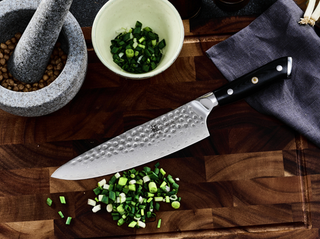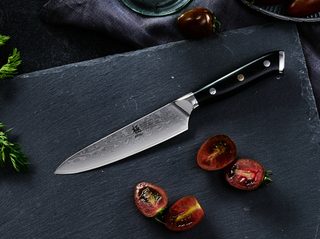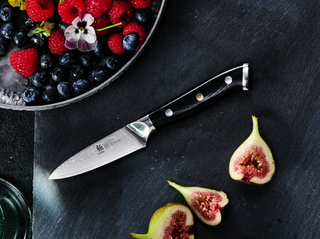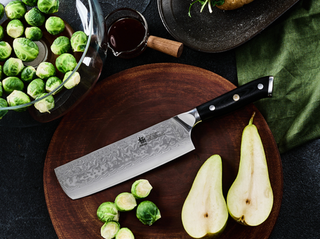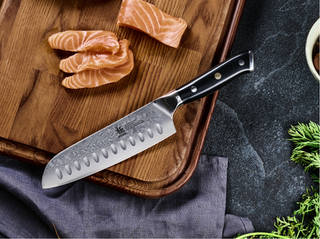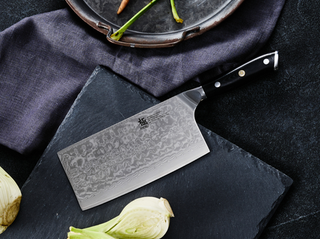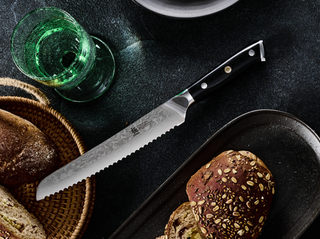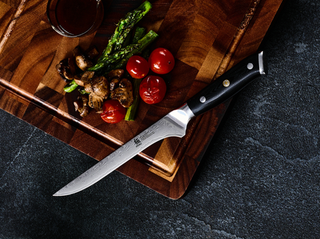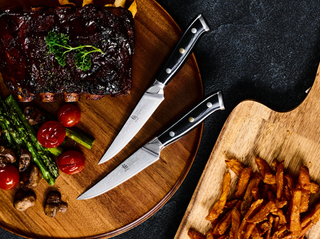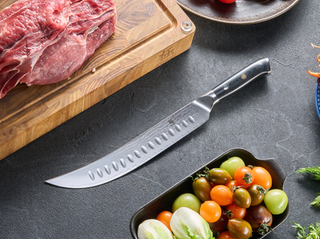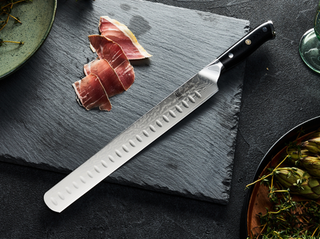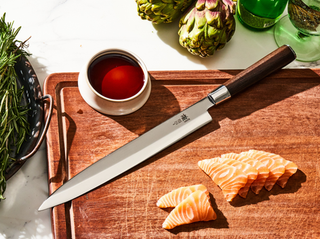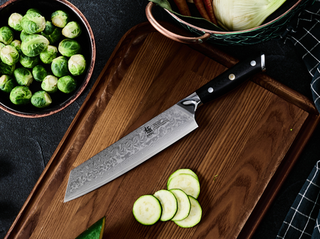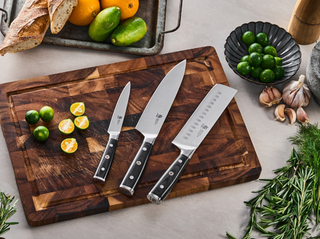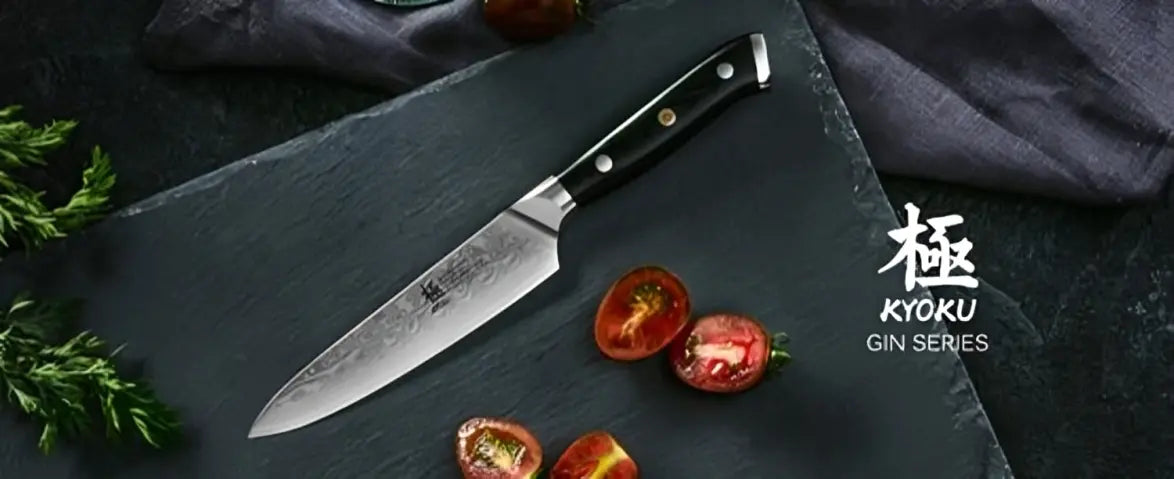We talked to master bladesmiths to uncover the truth behind these stunning blades.
Few kitchen tools spark as much debate and desire as Damascus steel knives. When I first encountered one at a chef's knife show in Tokyo, I was immediately drawn to those mesmerizing wave patterns. But after spending months testing these knives, interviewing Japanese bladesmiths, and diving deeper than I ever expected into metallurgy, I discovered there's much more to these blades than their beautiful exterior.
The True Story Behind Damascus Steel Knife

"The biggest misconception about Damascus steel? That all pretty patterns mean the same thing," says Kenji Tanaka, a third-generation bladesmith from Sakai, Japan. He's right - and the real story is far more interesting than most knife enthusiasts realize.
Here's the spoiler: Almost none of today's Damascus knives are what you'd call "true" Damascus steel. The original Damascus steel, known as wootz, emerged from South India over two thousand years ago. "It was revolutionary," explains Dr. Sarah Chen, metallurgist at the Tokyo Institute of Metal Arts. "They created a perfect balance of carbon content that made blades both strong and flexible - something virtually impossible with other steels of that era."
Japanese Knives Craftsmanship: A Different Path

The journey of Damascus steel into Japanese knife making marks one of the most fascinating chapters in culinary history. While Western bladesmiths focused on recreating historical Damascus steel, Japanese craftsmen saw an opportunity to evolve the technique for their unique culinary traditions.
When Damascus steel made its way to Japan during the Edo period, something fascinating happened. Instead of trying to recreate wootz steel exactly, Japanese bladesmiths saw an opportunity to evolve the technique. "Our ancestors weren't interested in making copies," Tanaka explains. "They wanted to solve specific problems in Japanese cuisine."
The result is a distinctly Japanese approach to Damascus steel that prioritized extreme sharpness and precision over the original Damascus steel's battlefield durability. This shift wasn't just about making pretty knives - it was about creating tools that could execute the precise cuts demanded by kaiseki cuisine.
How Modern Damascus Steel Knives Are Actually Made
When people see Damascus patterns today, what they're actually looking at is pattern-welded steel. The process involves stacking different types of steel together and forge-welding them into a single piece. It's incredibly labor-intensive, as each pattern requires specific temperature control, precise hammer strikes, and years of experience to execute properly.
This modern technique creates two main types of Damascus knives:
- Pattern-welded: Multiple steels forged together throughout the entire blade
- Clad construction: A hard steel core wrapped in softer, patterned steel layers
The Real Value Of Damascus Steel Knife
After testing over 30 different Damascus steel knives in both professional and home kitchens, I've found that the truth about their value is nuanced.
Damascus patterns don't automatically make a knife better, but the process of creating them often does
Because Damascus knives must be individually forged rather than stamped out in a factory, they tend to receive more attention to crucial details like heat treatment and edge geometry. However, that's only true for knives from reputable makers.
How to Choose a Quality Damascus Knife
If you're investing in Damascus steel knives, here's what to look for:
Core Steel Quality:
- Look for well-known steel types like VG-10 or Shirogami #2
- Avoid knives that don't specify their steel composition
Pattern Authenticity:
- Real Damascus patterns should show slight irregularities
- Perfect, repeating patterns often indicate surface etching rather than true Damascus construction
Maker Reputation:
- Research the bladesmith or company's track record
- Beware of suspiciously cheap Damascus knives - quality pattern welding is time-intensive and expensive
Having tested dozens of Damascus steel knives, I've found that price doesn't always correlate directly with quality. Take, for example, Kyoku's Damascus Steel 8" Gyuto Chef Knife. At $90, it exemplifies what happens when traditional Japanese craftsmanship meets modern manufacturing efficiency.
What Makes It Stand Out:
- Core Steel Performance: VG10 steel at this price point is uncommon
- Construction Quality: 67-layer Damascus with proper hardness levels
- Practical Design: The extra-wide blade profile reduces fatigue during long prep sessions
- Value Proposition: Delivers features typically found in knives costing twice as much
Where It Could Be Better:
- The 23 oz weight might feel heavy for some users used to lighter Japanese knives
- While sharp out of the box, serious users will want to refine the edge further
For home cooks looking to experience authentic Damascus steel without investing several hundred dollars, this represents a sweet spot between performance and accessibility. Just remember that even at this more accessible price point, proper care remains essential for maintaining the knife's performance and appearance.
Conclusion
If you're buying for pure performance, you can find equally capable knives without the distinctive patterns. But if you appreciate the artistry of bladesmithing and want a knife that's both a functional tool and a piece of culinary heritage, a well-made Damascus steel knife offers something special.
In the end, a Damascus steel knife is like a handwritten letter in a world of emails. Yes, both communicate the same message, but one carries with it the mark of human touch and tradition.
